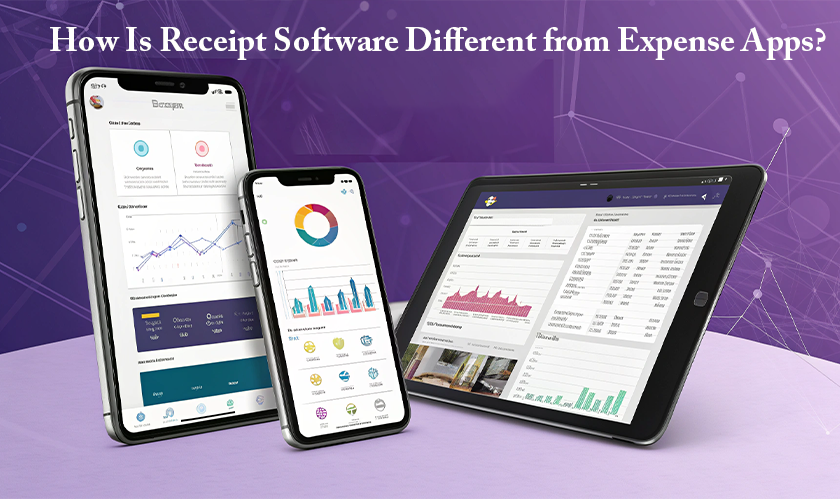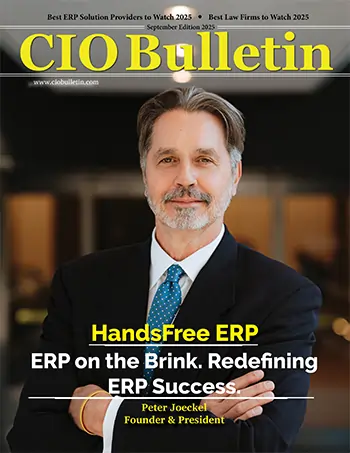Home Technology Software How Is Receipt Software Differ...
Software

CIO Bulletin
05 November, 2025
In the digital era, a reliable solution for managing financial resources is the topmost priority for all domestic and commercial setups. Receipt software and expense apps are among the most mentioned tools. They may look the same but have different functions. In this post, we compare their differences and outline the key features and benefits of each.
Receipt manager software is designed specifically for receipts. It digitizes receipts by scanning and saving them for easy retrieval and sorting. It is an essential tool for businesses, where many transactions take place, to help them manage paperwork.
Expense apps, on the other hand, have a wider range of functions. They track spending and budget finances and often integrate with bank accounts. To keep expenses in check, users can categorize them, set spending limits, and generate detailed reports. These apps help individuals and small businesses monitor their spending habits.
Receipt software is designed to provide accurate details about your receipts. It utilizes OCR to pull details like date, amount, and vendor. These features will decrease manual data input and reduce mistakes. Also, the software helps users keep digital copies of any physical document, which not only reduces the clutter but also makes it easy to reference.
Expense apps come with many features to raise awareness of finances. These usually also offer budgeting tools that help the user establish financial goals and track them as they progress through life. Other applications alert you to upcoming bills or overspending, which can hone your financial discipline. Bank account integration also gives a full financial view by connecting transactions to budget categories.
Receipt software is usually aimed at businesses—particularly those with a lot of transactions to handle. It is helpful for accountants, finance teams, and business owners who need to keep their financial documents on file when it comes time for an audit or to pay taxes.
On the other hand, expense apps have a broader customer base, which consists of individuals and small business owners. These apps are best suited for anyone who wants to maintain personal finances, spending habits, or budgeting. Freelancers and entrepreneurs also appreciate these apps for tracking personal and business expenses.
Most receipt software comes with a built-in auto-integration feature for accounting software. This interplay enhances the automatic transfer of financial data, limiting the capture of new information by hand. With this integration, businesses can keep accurate financial records, which is vital for preparing taxes and financial reporting.
In contrast, expense apps often tie up with many banks. The tool automatically imports and classifies transactions. This tool helps create a complete view of a user's finances, aiding in budgeting and understanding where their money is spent.
Receipt software usually has a very basic and simple UI and only relates to receipt management. It has no hidden features, so users can quickly browse and streamline receipts. This simplicity increases productivity by enabling users to concentrate on their core business functions.
Expense apps, though, tend to be more engaging. These include dashboards featuring spending trends, budget progress, and financial statistics. These visual representations help users understand their economic behavior and encourage better money management. In addition, numerous mobile versions of apps allow access to financial information on the go.
Receipt software and expense apps always keep data well secured because money information is sensitive. The receipt software often encrypts and stores scanned documents securely. This feature helps guarantee that only the users who actually have permission to view or change access to any financial records do so.
Expense apps also have the highest security, and these types of measures are also taken. They encrypt data and protect user data through multi-factor authentication. In addition, they usually offer user controls to manage access and protect privacy and security.
Receipt software and invoice apps are crucial tools for your business, but serve distinct purposes. Receipt software is a specialized solution for businesses that require fast receipt management, while expense apps provide end-to-end tools for all personal and business finances. By recognizing what sets them apart, users are better able to identify which tool can contribute to their financial organization and decision-making.







